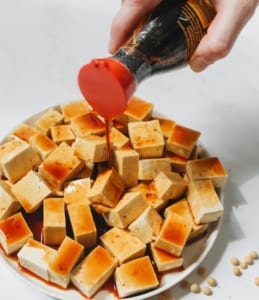
Photo by Polina Tankilevitch from Pexels
Soy sauce is made from a fermented paste of boiled soybeans, roasted grain, brine, and particular varieties of Aspergillus fungus. After fermentation, the paste is pressed, producing a liquid, which is the soy sauce, and a solid by product, which is often used as animal feed. Soy sauce is a traditional ingredient in East and Southeast Asian cuisines, where it is used in cooking and as a condiment.
Both the fermentation and the acid hydrolysis result in some of the protein being broken down into peptides and further into individual amino acids. The exact composition will vary from product to product; typically being high in Valine, Tryptophan, Lysine, and Histidine.
This investigation uses thin-layer chromatography to compare the amino acid contents of different soy sauces.
TLC of Soy Sauce – Pupil Guide
TLC of Soy Sauce – Teacher/Technician Guide
TLC of Soy Sauce – Risk Assessment
The short video about the TLC of soy sauce which you can watch below, can be downloaded here if your internet connection does not allow online viewing.



